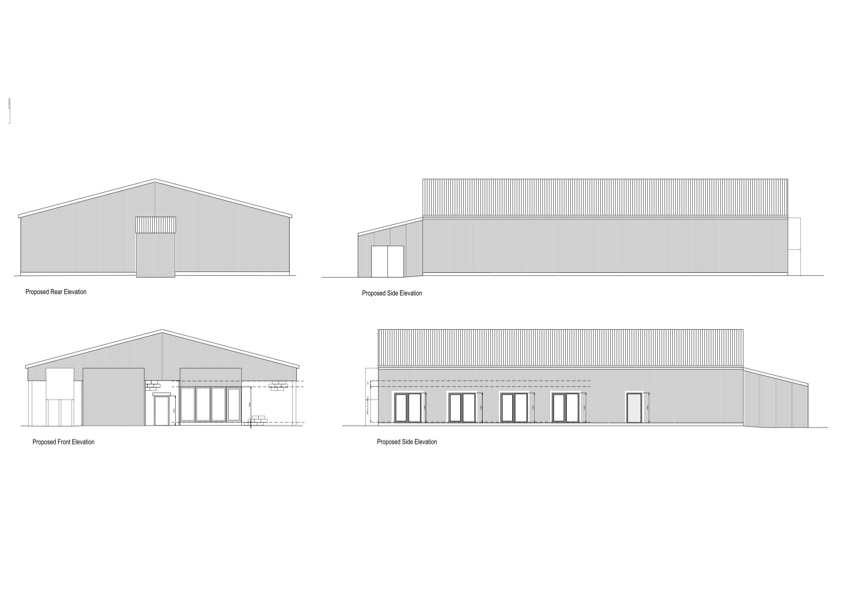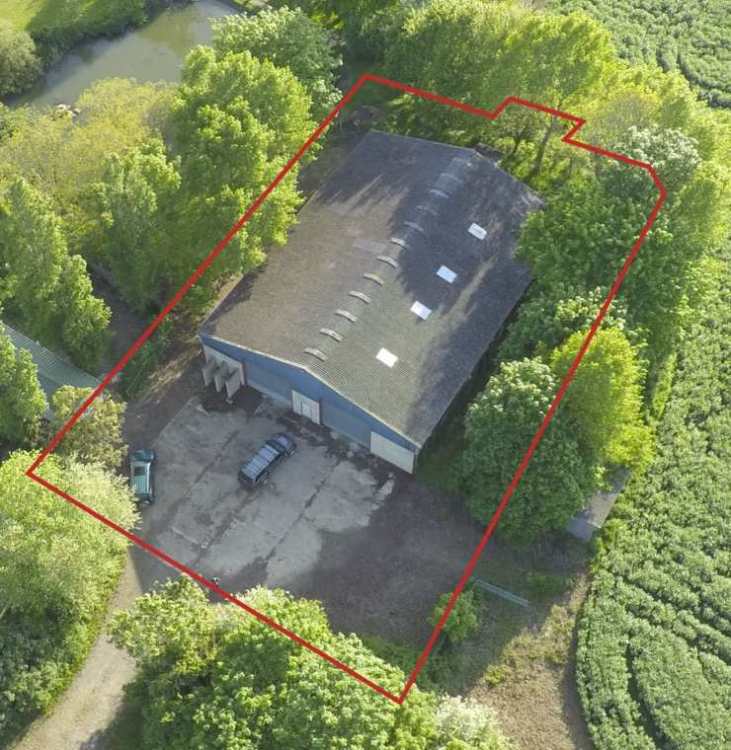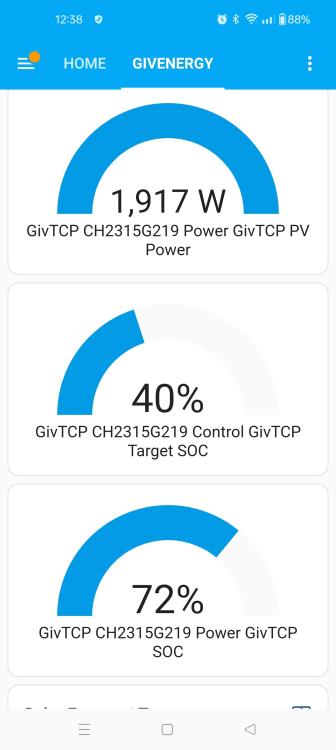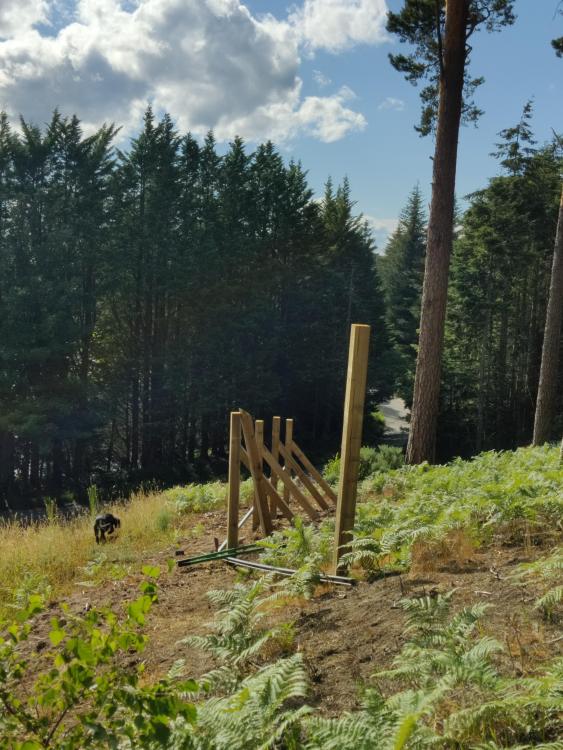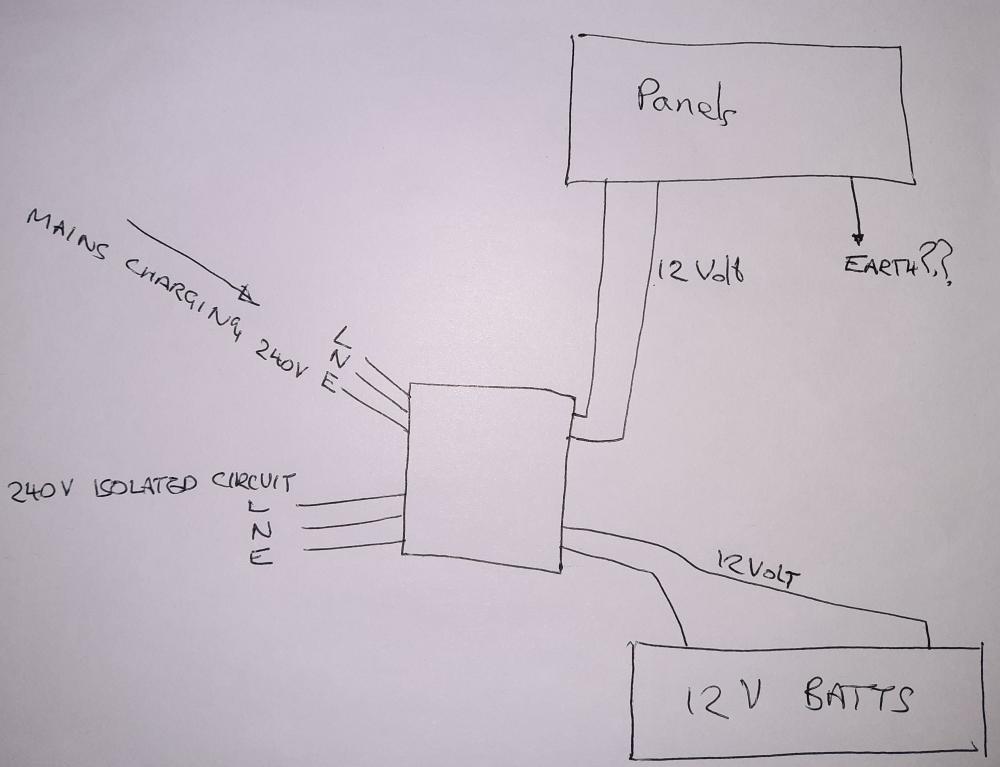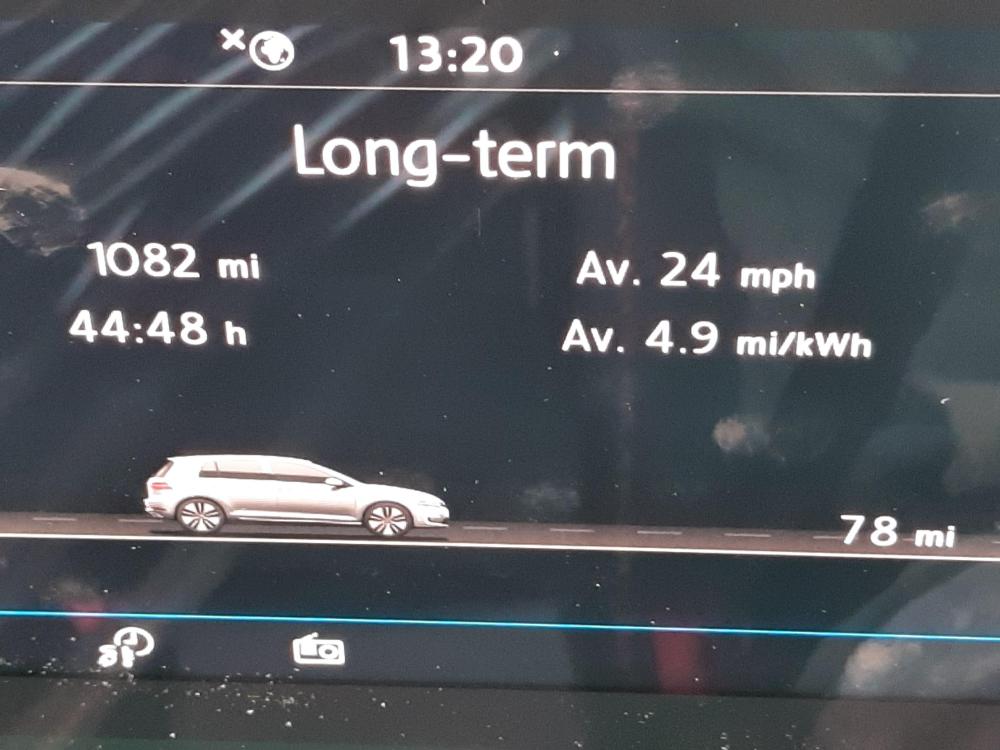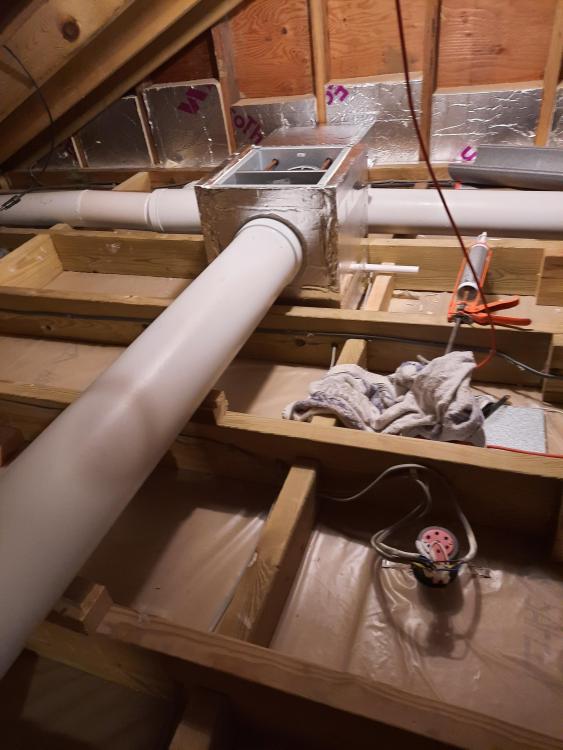Search the Community
Showing results for tags 'pv'.
-
My second PV diverter has now given up. Coming to the conclusion the multiple switching isn't good for their health and they are cheap rubbish. Not willing to part anymore cash on them. So looking to go basic but smart enabled. Control scheme will be something like x kW being generated, battery state of charge is higher than x%, run full 3kW into immersion for 30 min recheck and run again etc Can do the control via Shelly and home assistant - have both already. But need a relay that is happy switching 3kW reliably - anyone got a recommendation? Not sure I would trust a Shelly do that directly Does the control sound feasibly?
- 31 replies
-
Hi All, I hope someone sensible can help point me in the right direction or offer some useful comments on our project...! We'd initially planned to heat the whole place using an oil fired boiler with a wet system - underfloor tray system for the office space with warm air blower to keep frost off the warehouse space in the winter. But now we're wondering whether we can heat the office area appropriately with an ASHP throughout the year, possibly supported with PV panels on the roof? (It's a large roof, approx 250sqm is south facing, unobstructed - we can trim the trees). Outline as follows: We have a steel portal frame barn which we're converting into a warehouse with internal offices. The existing asbestos roof and steel sides will be replaced with insulated Kingspan panels (KS1000RW 100mm for roof and 73mm for the sides - both with U Value of 0.18 W/m2). The building measures 25m x 17.5m, average height is 5.25m. (see plans) Within the building is the office, which measures 8.3m x 15m x 2.6m. Ignore the additional small building on west side it's being demolished. When it's -3 deg C outside we'll need to maintain approx 10 deg C in the warehouse and 22 deg C in the offices. The place is only occupied during normal office hours. i.e. I'm not worried about keeping it warm at night, just that it doesn't freeze! We guess our heat demand would be approx 4kW for the office area and 16kW for the warehouse. (Maybe someone can tell me if this is miles off?). How can I work out how much energy an appropriately sized ASHP will USE across the year? Furthermore, we've got a great big roof area relative to the size of the office to be heated so can Solar be used to power the ASHP for most of the year? I guess in depths of winter when it's grey and wet the contribution would be minimal... at the time when the ASHP will be doing the most work and COP would be at its worst? What would a sensible output of PV be? Any advice warmly welcomed! Many thanks, Sven Proposed.pdf Floorplan.pdf birds eye.pdf
-
First day with no imported energy. Good solar day yesterday and battery starting to earn it space in the home. So no battery charging required overnight, the battery ran down to 54% before PV started to charge this morning. Snap shot from home assistant Energy page, showing current status A further shot from the GivEnergy page in home assistant, shows current generation (cloudy), target charge point (overnight on E7) and current battery charge status.
-
Decided to add to existing roof array. Roof array gets quite a bit of shading from trees and especially in winter ends up with a very short solar day. It faces south east. New array will be ground mounted vertically, more optimised for winter generation than summer. The vertical is also to protect from bits that can fall from overhanging trees. So doing it on the cheap and myself, except the electric hookup. Panels 12x 380W, 2 years previously installed life, bought for £700, plus a 3 hour drive each way to collect. Inverter (solic double mppt) again previously installed for about 12 months, bought for £150, collected on way from work. Isolators AC and DC, generation meter, stickers and MC4 connectors, £99. Mounting frame being made from 4"x4" posts and unistrut. Which is mounted on the hill behind the house. Posts will be postcreted in. Made a start on the frame. One half will be SW facing and the other half SSW facing.
-
It seems to be something of an industry standard practice to under solar inverters relative to the power of the solar panels fitted, typically about 25% below the rated max of the panels. For example, I know of an 8 kW panel system facing due south with a 6 kW inverter (feeding home, EV, Powerwall, and grid); while at the other end of the scale (and country) the well-respected, long-established local company who installed my system insisted that a 1.6 kW inverter was the right size for 2.1 kW of panels (also south-facing). Both inverters are current gen Solis. It was explained to me that the smaller inverter would be more efficient when the panel output voltage is lower on cloudy days, which are obviously the norm for most of the time in the UK. But it just bothers me when I see the system output pegged at 1.65 kW with the sun out... When collecting lots of quotes for a larger rooftop project (20 kW) I noted that some installers were specifying undersized inverters and some were not. It tended to be the younger companies who were not. We've picked a company who happen not to be undersizing (on the basis of price per watt of panel, not that they didn't spec an undersized inverter). What do you guys think? Undersizing inverters, yay or nay?
-

Understanding PV energy production variations
Marvin posted a blog entry in ASHP, MVHR, PV and EV combo
Energy production is as variable as the weather. 🙄 But how much does it change the results in a month or year? Based on calculations using the PGIS data over 10 years I thought I would share the results. In one calendar year the energy produced can vary from the average by +/- 5%. In one calendar month the energy produced can vary quite widely! From +24% to -28% from the average! Here's my summarised results: Jan Feb Mar Apr May Jun Jul Aug Sep Oct Nov Dec Yearly hi/mid percentage 12.73% 24.94% 20.62% 12.17% 17.89% 9.83% 10.29% 10.72% 15.01% 21.15% 17.98% 10.59% 4.18% Mid/ low percentage -15.0% -20.7% -20.6% -12.7% -13.9% -13.0% -8.6% -13.6% -12.9% -20.1% -28.8% -17.6% -4.4% Worth considering when relying on PV results. -
On a 12v 860Watt PV panel system do the panels need grounding to earth? The charger/inverter is charged by the mains. The panels supply some 12v power for the batteries. The inverter only supplies 240v to a non-mains circuit. No panel earth point indicated on the inverter charger. The inverter/charger relays the, mains/battery power supply earth, depending on the supply. I have an earthing rod ready...
-
Having analysed the historical data output form the PHOTOVOLTAIC GEOGRAPHICAL INFORMATION SYSTEM for my PV setup in the winter of 2019-2020 the results show me that even in January I would fail to use about 75kWh of PV, even after taking into account all mernipulations
-
Building extension with ICF
-
I have a 6kW inverter donated by a kind BH member, so I decided to buy more panels today and put it to use as I have had good success with my smaller array using micro inverters. So I decided to setup the bigger inverter so I could connect it to the Wi-Fi etc. however, no dice. It's all hooked up on the AC side, but nothing lights up on the LCD screen - so the question is, do some models not fire up unless the DC side is active? I did plug in a single panel I have in my garage just to show the inverter a non-generating closed circuit, but to no avail. I know my micro inverters, when plugged into the mains, with a PV string attached but no DC generation do nothing, they look dead, you would only get a fault warning LED if the string was generating without AC connected. The inverter manual is a bit poor - Goodwe GW6000D-NS is the model. Thoughts welcome.
-
Hi being asked for a schematic showing the PV system showing inverter model and rating, for G98 approval. Anyone got a copy of something that has been accepted, that I could use, modify or copy. Many thanks
-
Hi, does anyone know (for certain) whether retro-fitting battery storage (AC coupled) to an existing Solar PV Installation that benefits from the old FIT requires the installer of the battery to be MCS Certified so as not to compromise the FIT payments? ...or can anyone point me to where it is confirmed either way?
- 15 replies
-
- mcs
- energy storage
-
(and 6 more)
Tagged with:
-
Having now had a 5.12kW system running for about 6 months, usage seems to be forming a pattern. It appears we are buying an average of about 11kW a day so 28p times 11 times 365 days means a bill of about £1,200 including vat and daily charge etc (This includes charging the EV but see below). We are trying to improve this without becoming anal about it. When you consider that our PV system realistically reaches, about 5kW max (due to orientation and roof angle) and about 1kW on a good winter's day, you begin to realise that the more you can reduce high energy peaks and spread the load over the day the less you will have to buy. Most of the time we need to think of equipment that uses electricity at a low rate of power per hour over a longer period to use most of the PV power. To replace our old tumble dryer we purchased one with a heat pump. We knew that it would take longer to dry clothes and that they still use less electricity to do the job, however it was hard to find info on peak wattage. We were please to see that the peak wattage was about 1000W during drying and overall less kWh's used, so low and slow compared with our old dryer. We have a 4 ring induction hob, which to be honest is a good thing and a bad thing, as far as I am concerned. I love being able to wipe the surface clean easily which keeps it looking good, however, when it comes to power usage I don't like it. It is very hard to test because I would need a 45amp amperage tester, but based on timed meter readings the sounds the induction hob makes and the reaction to the contents of a pan of water, I am pretty sure that it works like this: When you turn a ring onto full power, the small ring uses about 1-1.5kW continually. When you turn the ring down to half power it still uses 1-1.5kW but for only half the time: You can hear it ring clicking on and off and observe the water boil / not boil. so the peak power is always the 1-1.5kW. so not good. Also easy to scorch a little of something in the bottom of a pan.... Interestingly slow cookers seem to work the same way as the induction hob, but at a different level, and turn on and off for periods of time to achieve the different levels indicated on the controls (i.e. warm, low or high). After testing 5 new ones the results seem to show they run at about 300W peak power and turn on and off on the low setting, and so more cooking has been done recently using the slow cookers. If your into bread makers they also run at a low wattage and power usage and we use one. My mother had a low wattage kettle which required you to decide if you want to have a cupper in about 10 minutes time. I was not designed to do this and must have been faulty, however we are not going to use it! The item that I got wrong was the Immersion heater. I thought of low and slow but this is wrong. What happens is that as other house equipment turns off and on in the gaps suddenly there is 1 - 3kW pf power. However I changed the immersion for a low wattage one and so a lot goes to the grid during these times which could be used to heat the hot water. I kept the original 3kW one and will swap the before the end of the summer. The immersion heater temperature setting will be set higher in the winter than the summer and the 200L HWT will be used as a thermal store in the winter. I have noticed the heat leakage from the HWT to the buffer so wish to avoid this during the summer when the ASHP is cooling the bungalow. The charging of the electric vehicle is achieved in 2 ways. Using a CT relay switch, during the summer, the car will be charged when the PV produces over 3kW and in winter when the PV produces over 1.5kW. The other option is to charge whatever the PV is producing. I admit that the EV is only doing about 4000 miles a year and is plugged in when at home (most of the time). As it belongs to SWMBO I'm not allowed to transport the mixer in it! If you drive 10,000 miles a year, spending 5 days a week at work and out at weekends, PV will not help much with charging the car (unless you spend THOUSANDS (at present) on a 80kW battery system). Note the EV is not charged at home but elsewhere about 5 times a year. Going forward we are looking into a possible Ridgeblade system/ type system to produce power from wind as we live near the coast. We have installed a weather station on a shed but aim to move to the top of the ridge to obtain more accurate wind direction so hopefully we can calculate if we have enough in the right direction to think of installing something. Rainfuel. We are still searching into power production from the electrical charge in rain water. Search for technical information has produced very little result and I fear needing to eventually conduct large scale trials. To do this I will need to do small scale trials and before that I need to consider as many alternative set up options related to a building installation and as many alternative ways to introduce the rain water to the contacts. Good luck with your project. Marvin Situation that this information relates to: 100m2 Bungalow, 2 people, 200 litre HWT, 13amp EV charger, Solic 200 immersion controller, Energy source only electricity, with AIM and APE elements. That is Airtightness, Insulation, Mechanical Ventilation with Heat Recovery, and Air Source Heat Pump, Photovoltaics and Electric Vehicle.
- 15 comments
-
- pv
- tumble dryer
- (and 7 more)
-
Running all 4 in the winter is quite interesting: PV generation: About a week with overcast skies and then a couple of days of sun. January is supposed to be the low point for PV generation. Based on the EU calculator we should produce about 180kWh in January. We measured 195 which is about 6.3kWh a day on average. However generation happened spasmodically along with the weather. For example 14kWh on a good day and 0.86kWh on a poor day. EV Having the electric car meant that on the few days in the month when the PV generation was over 2kW we charged the car. We use a 3kWh plug in charger. Even with a 5.12kW system on the roof at peak generation during January we only saw a top of about 3kW, so rather than waste (send to the grid) maybe a kW or two we charge the car when generating 2kW or more and reduce the overall cost of charging the car. We calculate that over a ten year period that 1kWh used will have cost us about 10p. Hot water: Most of the excess was captured in the hot water tank using the Solic 200 controller and a 1kW twenty seven inch immersion. Twice even reaching over 60C resetting the countdown timer designed to warn us when the tank has not been over 60C for more than 10 days. MVHR The MVHR is now running smoothly with all controls working. One of the interesting items is the water coils that have been installed in the air ducts. These have increased the inlet air temperature from 17C up to 25C depending on the heating water set temperature and flow rate through the coils. Quite nice to have warmer air into the rooms in winter. Can't wait to use them in summer when cooling the bungalow using the ASHP and powering the ASHP using the PV. ASHP: ASHP kWh use over January roughly 9kWh a day for 100m2 for average 20 C over 24 hours indoor temperature. Had to move the ambient temperature sensor on the ASHP the other day because it was exposed to direct sunlight and effecting the temperature compensating mode. If it wasn't for Build Hub and the helpful contributors I would have struggled with half of this..... Thanks to everyone on here who helps. Many people who are new to the idea of ASHPs will find this a good place to start. Good luck with your project. M
-
Well the combo is coming together and my wife insists that I make the controls as clear as possible "in case your not here". I wondering what she means. Still a lot to do though..
-
Hello. I am due to get a 5KW system spreed between my SW roof and S facing garden in Feb. Along side this will be 10Kw ‘9kw usable’ of batteries. I’m looking at possibly trying to figure out a way to either preheat cold feed going into combi boiler ‘might need a different boiler but it’s 15 years old’ or preheat cold mains feed going into 10.5 Kw shower. Anybody recommend a way to preheat water to set temp in either from excess power from PV’s? A question on solar array. If on a bright sunny day I’m producing 4.5KW and fire up 10.5KW shower, do I just draw 6kw from the grid? That might be a daft question? lastly has anybody have any experience with PureDrive batteries? Dc 5kw x2. Many thanks
-
Definitely a consideration when thinking about PV to reduce running costs on a new build.... https://www.bbc.co.uk/news/business-59760331
-
In our neighbourhood, for some reason, our PV seems to be producing power even in the night.... 20211214_225256.mp4
-
The holistic set I am installing is: ASHP main parts: : Air to water Cool Energy inverTech Air Source Heat Pump CE-iVT9 4.3kW-9.5kW Cool Energy 60L Stainless Buffer Tank CE-B60 MVHR main parts: Domus HRX2-D Heat recovery System with "summer bypass" 125mm and 150mm rigid circular ducting and Domus duct insulation. Electricity Generation main parts: PV Sofar Solar Grid Tied Inverter 6KTLM-G2 16 Longi 320W Mono Solar Panels CT clamp to limit power generation into grid. HOT Water system: 206 litre indirect hot water cylinder. 1kW by 27 inch 240 volt immersion heater Pump to showers Heating system: Panel radiators and two CWH 160-3 VentMatika Circular duct water heaters in the MVHR ducting. Cooling system: Two CWH 160-3 VentMatika Circular duct water heaters in the MVHR ducting. EV charging point: 13 amp plug-in point direct to ring main 13amp plug-in point controlled by PV production via CT clamp. Controls: Dampers to the MVHR. water flow sensors CT clamps
-
Hi Can you buy equipment that will monitor the 240v ac output amperage/wattage from a PV system, and depending on the power, turn relays on/off to swap the power supply to and from a PV or mains supply to different circuits. This assumes the PV is not connected to the mains My brother always says its not if, but how much, so I suppose my real question is would this be expensive to do. I am working on a 5120W PV home system. There is still lots to decide including splitting the system to connect to the mains in part as I can use the rest for several low wattage continual use items in the house with battery storage including the MVHR. Thanks Marvin
-
-
Hi ashp, mvhr, pv, ev and duct water coils. I am just starting to bring all the above elements together in our bungalow and wanted to run the works on a blog on Buildhub. In order to show my appreciation of this site I have funded buildhub and PMed @newhome as requested. I have also PMed @BuildHub to ask about setting up a blog. I hope that the volenteers on buildhub will be able to help find the time so I can document what I'm doing. Also as I go I hope that feed back from the members will help me when I struggle. Here's where I am at present: Marvin
-
Iron-air batteries seem to be a future possibility. After a decade of research, types of Iron-air batteries are starting to come to the market. However not for the likes of me yet - more super scale, but if successful I hope it will trickle down to single property systems being charged by PV. My PV system would produce almost all the electricity I would need in a year... if I could store it all...
-
Hi What cable type is best to extend the reach of my CT clamp? Marvin.
-
Hey Folks, Getting quite close to finally pulling the trigger on this build and of course there the many questions popping up in my head every day, especially after browsing this forum each day! The latest niggle in my head is should we have planned to have solar panels along with our ASHP?! Our 290m2 house will have UFH on the ground floor with rads upstairs. Plumber has quoted a 16kw ASHP with a 300 tank (50 litre buffer tank). Bit of a basic question however what would the PV’s (if we had them) be best utilised for exactly? To simply power the heat pump? Given the plumber has quoted a 16kw pump is it asking a lot for PV’s to power such a pump and therefore would it be cost effective? I have also heard people using solar panels for the hot water only? Whatever the outcome we 100% do not want masses of PV’s on the roof, a couple would be acceptable on the integral garage I think. I will admit I am a little clueless with solar panels and their associated cost to install - any figures would be greatly appreciated. thanks again for your help guys


